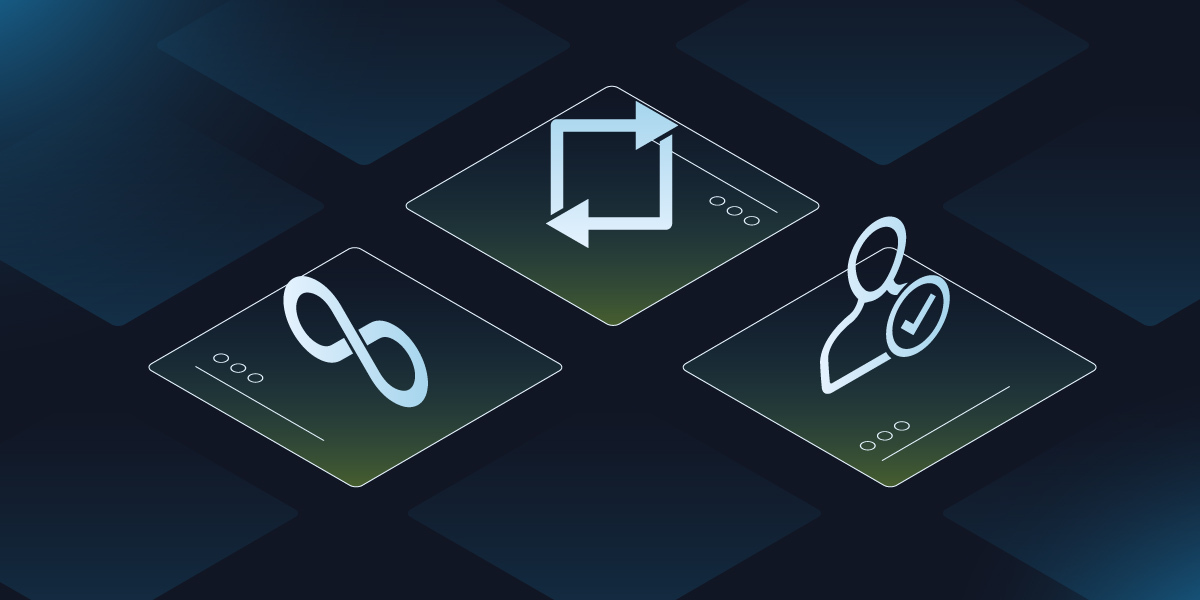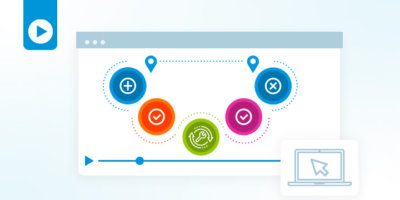What do you think when you hear ‘NetDevOps?’
It’s a term that’s picked up a lot of steam in recent years, as network teams work to transform the way they build and manage network automations in order to more flexibly support the business. NetDevOps is about bringing the best of DevOps and the best of NetOps together to create a more streamlined and efficient operating model, where both sets of teams can collaborate on assets and processes.
It’s important to network transformation and modernization efforts, streamlining and facilitating automation across networking and IT infrastructure. Just like with all high-level concepts, we can break NetDevOps down into its parts to build a real, tangible understanding — not just as a concept, but for a realistic view of what it means for you and your team moving forward.
That’s exactly what Itential’s CTO and Co-Founder, Chris Wade, sat down with Ethan Banks and Greg Ferro of Packet Pushers’ Heavy Networking to do. I highly recommend this podcast episode for any network engineers or operators who want to get a big-picture view of the future of networking, including key concepts like NetDevOps and self-service, without having to pore over some fifteen-page white paper. The full episode is here — now, let’s get into some of the highlights.
What is NetDevOps?
Imagine this scenario (maybe more like remember it). You’ve just completed a network change — provisioning a firewall, let’s say. Instead of moving on to key network management activities, or even just moving on to the next routine change, you need to swivel-chair over to other systems. You close out your ITSM ticket, then go send some update to the security team, and only now once you’ve confirmed those steps do you get to swap back to, you know, actually managing the network.
What if instead, you could automate the update to the security team, integrating with the systems they use to push messages for every change you make? And what if your tickets no longer required you to switch over to an ITSM system yourself — and you could simply automate updating the ticket alongside the steps of an automated network change process? This kind of end-to-end orchestration is the promise of a NetDevOps approach.
“Usually, you hear that NetDevOps is about taking DevOps technologies, tools, and processes, and applying them to the network. Which we’re super supportive of as we get into Infrastructure as Code and platform engineering. But networking is unique and special, and we really think we need to take the best of NetOps and the best of DevOps and put those together as we look at how teams deliver solutions.”
So take it for what it is — NetDevOps is a union of NetOps and DevOps, taking what other IT teams have learned over the last years and bringing it to networking while also freeing core networking knowledge from its silo. That way, applications and services that require connectivity are actually built with the network team’s input, and your infrastructure works better together.
Breaking the Networking Silo
“Take what the teams have built, and take the technologies that are available from the modern ecosystem, and blend them together so the team can work together and achieve the outcomes we all want.”
— Chris
There are several components to breaking the silos to bring networking and the rest of IT together. First, though, is an evolution: extending both mindset and toolset to adopt the API-first, high-reusability approach that characterizes modern IT environments and leveraging all the resources the modern networking team has available to them, instead of remaining culturally stuck.
When we think about modern networking tools, such as SD-WAN, they are coming with automation capabilities built-in, just like other IT systems. Notification systems, ticketing and ITSM, domain-specific networking technologies like firewalls or DNS IPAM — there’s automation being provided for all these solutions. This is especially important going forward since networking must become “the fabric of IT” as Chris puts it. Everything, everything, relies on connectivity.
And the networking silo doesn’t only impact the network team’s side of things. “What [Itential’s] customers have been requesting,” Chris says in the episode, “is self-service. So instead of us fulfilling requests on behalf of end users, users would like to come request the network, just like they do any other infrastructure.”
“We want to fit network automation into the operational paradigm of our end users.”
— Chris
Breaking the silo and adopting NetDevOps means you can deliver self-service networking to your end users — your automations can both integrate with the systems they use to manage their work today and run across all integrated systems without requiring your manual input.
This accelerates service delivery, driving innovation across the organization while simultaneously making your life easier.
Sound appealing? Here’s how Itential can help you achieve it.
Self-Service Networking with Itential
The biggest piece is our API-first approach to automation. The Itential Automation Platform offers seamless integration capabilities with your networking and IT systems, enabling automations to dynamically read data from or push changes to monitoring systems, inventory, ITSM and ticketing systems, and more.
To facilitate easy integration, Itential provides a collection of over 200 Pre-Built Adapters and Integrations to various systems, and we also leverage standardization in APIs and OpenAPI/SwaggerSpec to auto-generate adapters to additional systems you may need. Then, we use JSON to provide easy data transformation capabilities, leveraging JSON schema to translate data between automation steps rather than prescribing a specific data model.
It’s this flexible, API-driven approach that allows our users to expose automations to whatever environments they need. Itential exposes its API northbound for consumption by any other API-based system, and any processes in Itential can be exposed as microservices. Then, by enabling automations to work seamlessly across all your domains and systems, Itential enables self-service network changes to be completely automated.
One of the most widely used methods for exposure is our certified ServiceNow app, which allows published automations to be run by the IT team right in ServiceNow, complete with input validations via JSON forms. And that’s just the beginning – already, we’re exposing automations through GitHub Actions and other IT systems.
Bringing networking into the modern landscape of IT infrastructure might sound like a daunting endeavor, even when the need to deliver a cloud-like experience is only becoming more important. But this same complex and growing landscape is producing more resources, more APIs, more automation assets, more tools, and more strategies. Network teams aren’t making their way alone in the desert when it comes to automation – the path is already there.
A big thank you to Ethan and Greg and the entire Packet Pushers team – any networking pro who listens to this episode will come away with an understanding of Itential, a working definition of NetDevOps, and the knowledge that self-service automation is an achievable, practical goal.
To listen to the full Packet Pushers episode with Chris, Greg, and Ethan, check it out here. And for a guided look at the Itential Automation Platform, be sure to check out our free, interactive Platform Tour.





